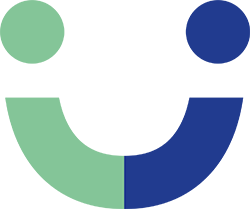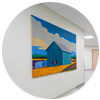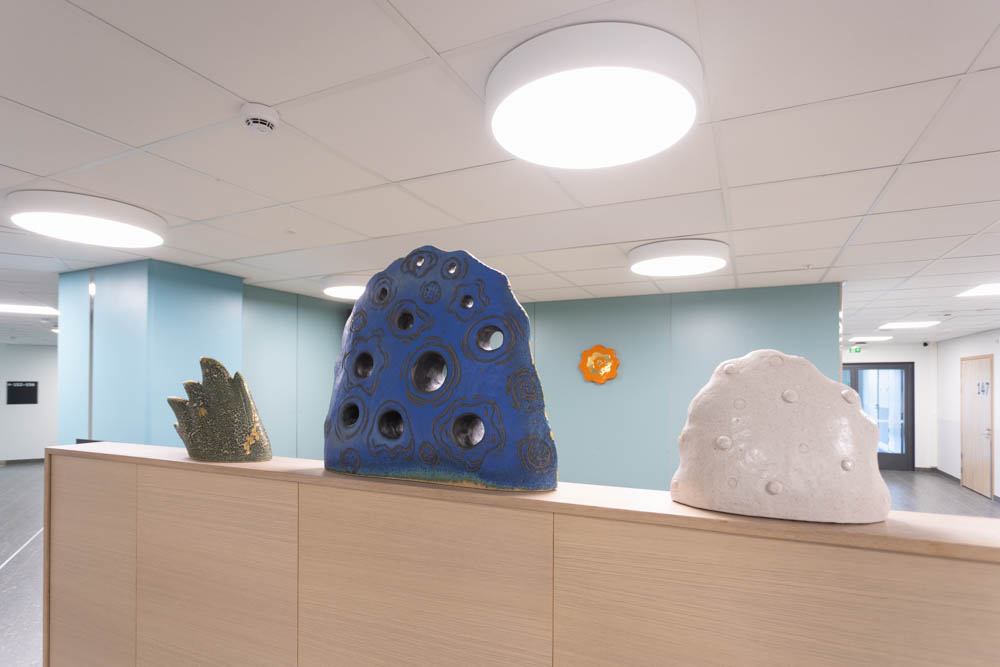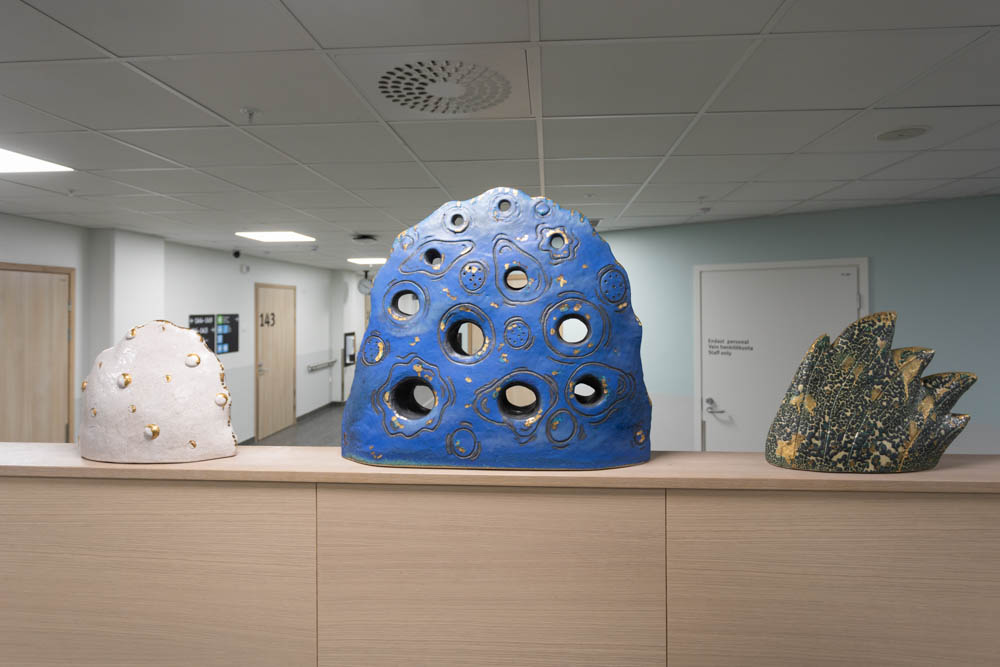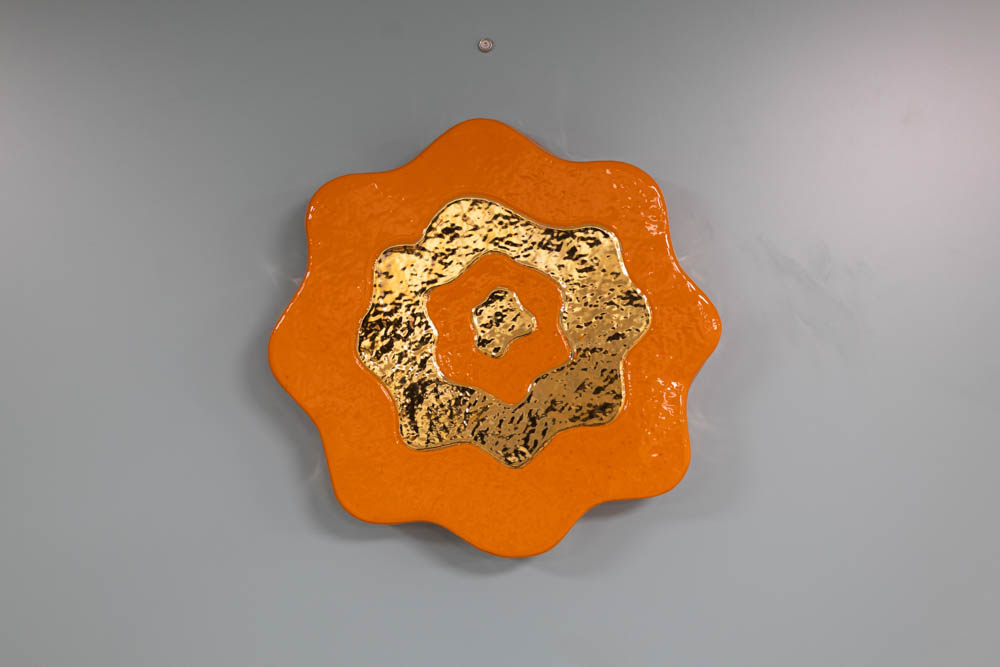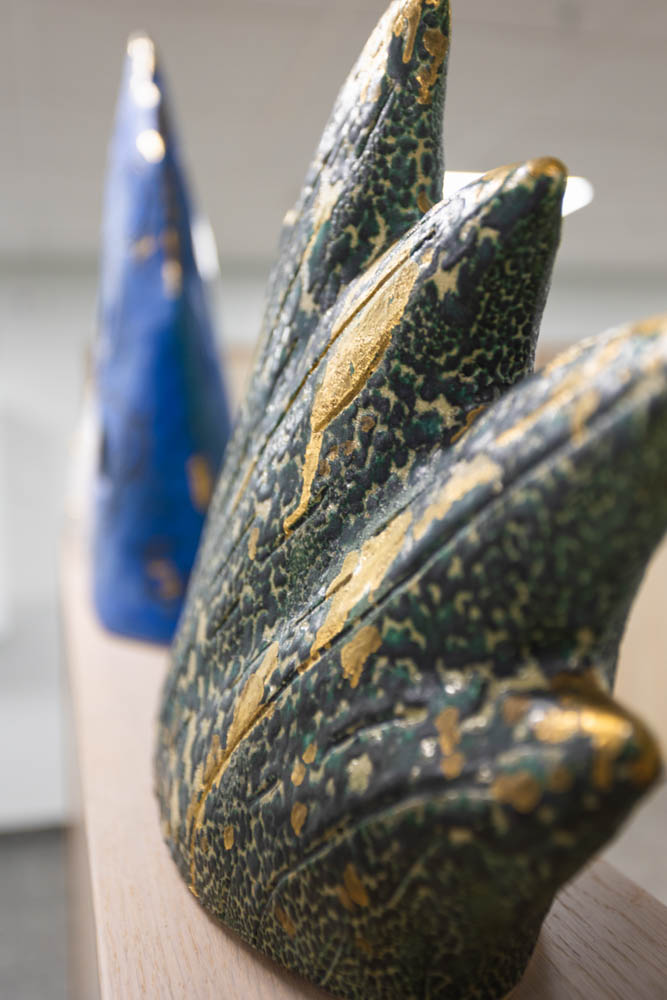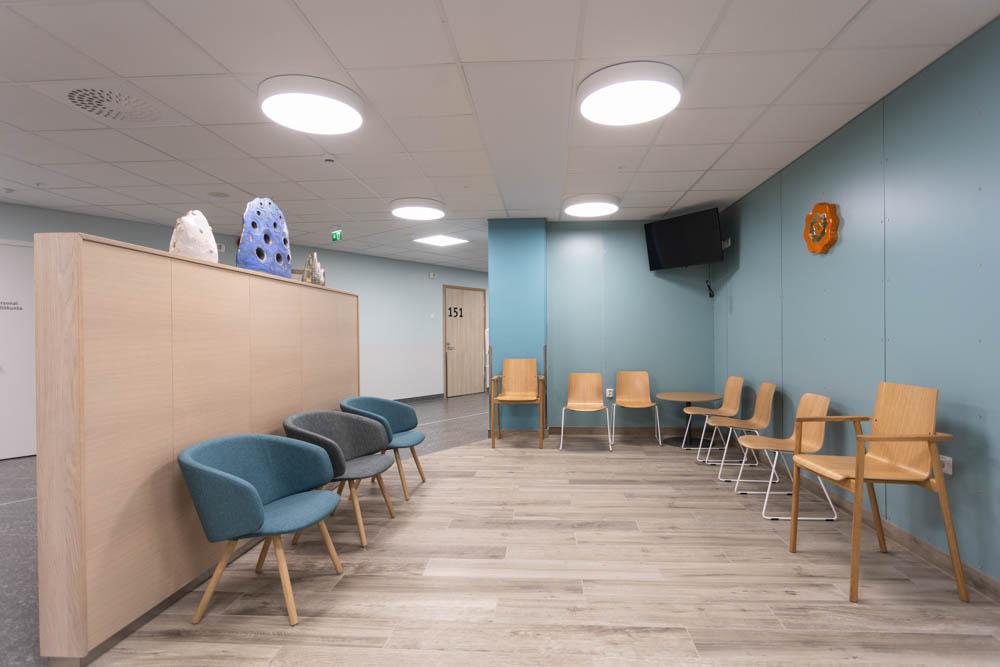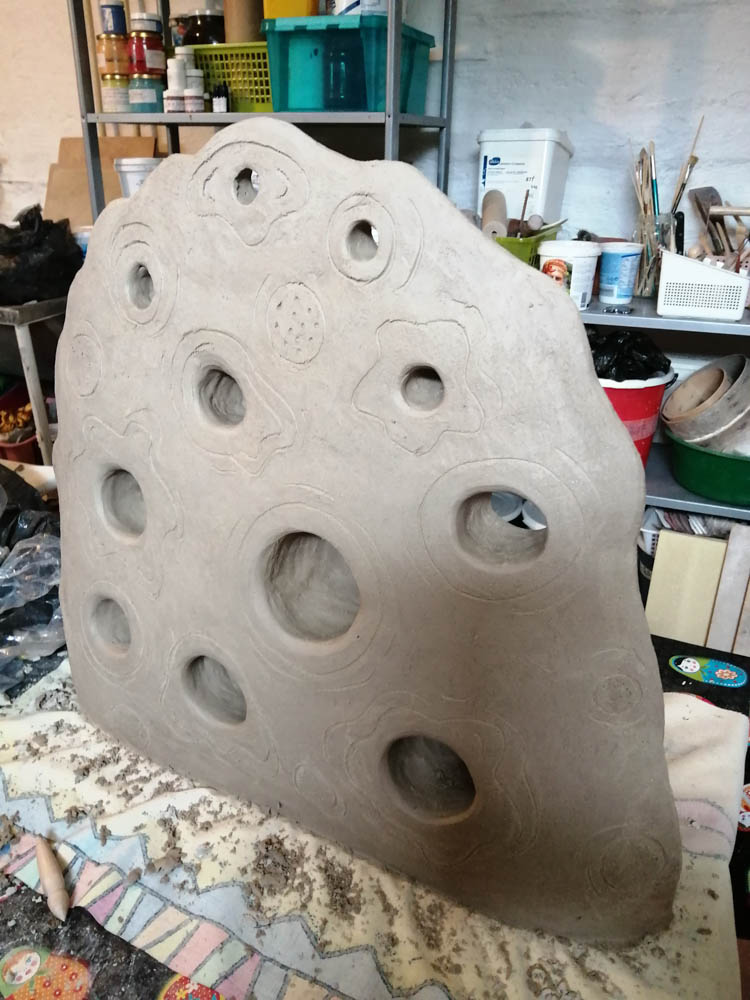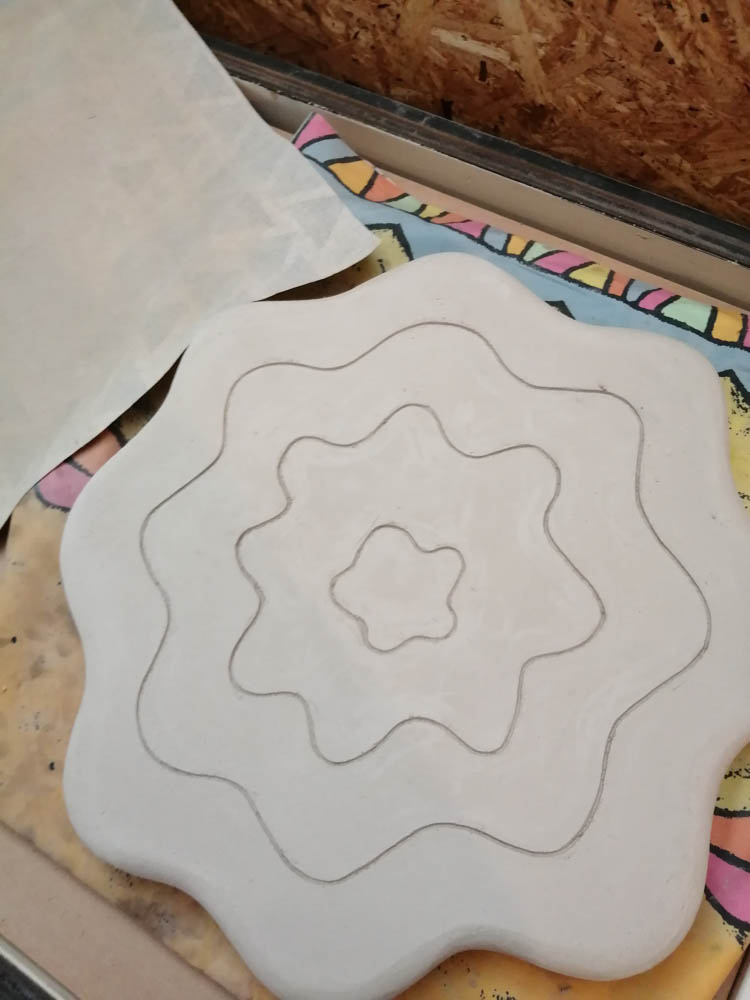
Light beneath the surface -series of sculptures
Sculptor Paula Blåfield
The series of ceramic sculptures “Valoa pinnan alla” (Light beneath the surface) by Paula Blåfield, located in the H Building of the Vaasa Central Hospital depicts the rich underwater world of the flads and gloes of the Northern Quark. A variety of underwater growth glimmers as the sun sheds light on them through the water.

Paula Blåfield’s work is characterised by multi-arts approaches, group work and participatory exhibitions
I’m a ceramicist and sculptor from Vaasa. I graduated as a Master of Arts from the University of Art and Design Helsinki in 1985 and since then I have had many solo and joint exhibitions both in Finland and abroad. I have also participated in creating cultural events for children and worked in a variety of art project with the elderly. My work is characterised by a multi-arts approach and group work. Many of my exhibitions are also participatory.
Photos: Sami Pulkkinen
Making the series of sculptures Light beneath the surface
My work located in the H Building of the Vaasa Central Hospital is made of high-fire clay. In the work, I used a variety of ceramic glazings, non-ferrous metal oxides and gold porcelain. The work comprises four pieces, with three located on top of a screen while one, depicting the sun, hangs on the wall.
I came up with the idea while reading about the flads and gloes of the Gulf of Bothnia and about how land uplift is slowly eating away shallow bays. First, a flad is created, which is still connected with the sea and once that connection is broken it turns into a gloe, which transforms to a freshwater lake. Flads and gloes provide a protective miniature environment for unique flora. Fennel-leaved and perfoliated pondweed, charophytes and water milfoils stretch towards sunlight. My work is divided into three parts, which depict this fascinating underwater world. The part of the work hung on the wall features a golden orange sun, reflecting golden light on the works on top of a screen.

The process from idea to a completed work started with drafting and continued to making test pieces. I experimented with a variety of different shapes and glazes on ceramic miniatures. Making ceramics is challenging due to the element of surprise in glazing. The thickness of the glazing and temperature of firing impact the colour and the result is only visible once the work is ready and can no longer be altered, unlike a painting, for example. For the final work, I used a glaze sprayer which changed the hues of the work slightly. The sun cracked while firing the glaze, but I had made paper schematics of it, so it was easy to re-create. I am satisfied with the result and the hues of the glazes are as I planned. Making ceramics is always time-consuming. First a piece is shaped, it must then dry for at least a week after which it will undergo bisque firing, glaze firing and gold firing. All told, this process takes approximately three weeks.
I wanted to use the colours and shapes of the ceramic work to liven up the space and provide a positive atmosphere. The work is abstract and leaves space for the viewer’s imagination. The hospital environment and atmosphere of a waiting room can be stressful and suspenseful for the visitor. My three-dimensional work is intended to have a calming affect, but also to inspire examining it from different angles and points of view. The colourfulness and plentiful shapes invite the viewer to explore and touch. Ceramics are a very suitable material for a hospital environment because it requires no maintenance apart from dusting.
